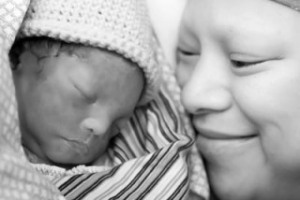
ANITA WOOD froze when the phone rang, the call display showing someone from Royal Columbian Hospital trying to reach her.
She let the call go to voicemail, and sat to think, doubting her ability to follow through on her commitment.
“What have I got myself into?”
Finally Wood composed herself and phoned back.
She spoke briefly to a nurse, grabbed her camera and photography gear and drove to the hospital.
Once there she took the elevator to the neonatal intensive care unit, took a deep breath and entered the room of a new mother.
For the professional photographer, it was the toughest assignment of her career.
A son lost, not forgotten
Trish Shirra never nursed her son Jos or heard him cry.
After 32 weeks of carrying him in her womb, he was stillborn.
In the delivery room there was no wail of a newborn entering the world, only the hushed sounds of a doctor and nurses going about their business.
Yet Shirra remembers her son every day.
Memories of loss, of course, but also a touch of fondness at the thought of Jos, who had been diagnosed with skeletal dysplasia 19 weeks into Shirra’s pregnancy.
Her memories of Jos are found on the walls of her home. Every morning she’s greeted by her favourite photo, a black and white close-up of her snuggling her son.
Images that heal
Those images might not have been possible if not for photographers like Wood, who volunteers for the Now I Lay Me Down to Sleep Foundation (NILMDTSF). The Burnaby woman is one of thousands of photographers across North America who help parents and families emotionally heal from the grief and pain of losing a baby.
The photographers, many of them professional, capture sensitive and beautiful images that become an important part of the healing process. While families may not leave the hospital with their baby, the photos they receive later help them honour and cherish their infants.
Proof of life
Shirra’s images of Jos, taken by photographer Jane Eaton Hamilton last November, help the 34-year-old woman live with the loss.
“It was proof that he was alive, that he was a person—he had 10 fingers and 10 toes, a nose and a mouth,” said Shirra, who recently moved from Vancouver to the Bahamas because of her husband Marc’s work.
“He was born, I did have a child, I am a mother—even though I don’t get to run around all day with him, see him grow up, deal with him crying.
“It really helped validate things.”
She shares the photographs with family and a few friends. To her they represent the spirit of Jos.
“My worst fear after I knew he was not going to live was that no one was going to meet him and I wasn’t going to be able to present him to friends and everybody,” she said. “But I can share these photographs with others.”
That wasn’t always the case.
When she learned first her son would not live, she was reluctant to accept the Now I Lay Me Down to Sleep services.
“It seemed a little bit morbid. It was a bit much at the time,” she said.
But as she learned more about the program, read testimonials of parents who used the service and saw some sample photographs, her opinion shifted.
“The idea of it made me feel warm as opposed to scared.”
A gift for families
Wood began working with Lay Me Down to Sleep in late February and has been given three assignments so far, all at Royal Columbian.
Wood, a mother herself, approaches each assignment with sensitivity and professionalism. That professionalism, however, left her on her first assignment when she delivered the photographs to the family.
“The father was home playing with their other child. I just broke down thinking of what they must have felt,” she said.
For many of the professional photographers like Wood, volunteering for Lay Me Down to Sleep is a departure from their usual work.
Wood’s photography assignments typically capture people at their happiest moments—just graduated, married, engaged or pregnant with their firstborn.
Yet she volunteered to capture images of mothers and fathers with their newborns who have died or have just days to live.
That’s because she feels a connection to the families and what they’re going through.
Her daughter Tiana, now 11-years-old, was born with a birth defect and had a rough start to her life. When Tiana was three she had a relapse and Wood almost lost her.
“For me I can understand how this could be such a great gift for the family,” said Wood, who documented her own daughter’s medical condition through photography.
“It is shocking for the parents. They get home and say, ‘What just happened?’
“So although this may be awkward at the time, this is a gift for them.”
Lasting forever
That’s something Shirra agrees with. Her delivery and time with Jos was all too brief.
“I only got a few hours with him outside of the time he spent in my belly. Having the pictures taken made the best out of a bad situation,” said Shirra, who is trying to get pregnant again.
“I don’t wish this on anyone but if they have to go though it, it really helps with the grieving process because (the photographs are) something tangible and they last forever.
“It gets easier every day I look at them. It brings a smile to my face.”
For more information on the Now I Lay Me Down to Sleep program, visit http://www.nowilaymedowntosleep.org.
How it started
The idea for Now I Lay Me Down to Sleep began with the birth of Maddux Haggard. He was born with a condition called myotubular myopathy that prevented him from breathing, swallowing or moving on his own.
Parents Cheryl and Mike of Colorado decided after six days he would be taken off life support. Before they did they contacted local photographer Sandy Puc to take some images of their son. From that experience, mother Cheryl Haggard and Puc founded Now I Lay Me Down to Sleep, now numbering more than 7,000 photographers around the world.

This feature won third place for best feature in the 2009 Suburban Newspapers Association awards competition.